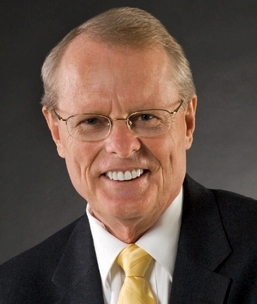I recall hearing a local independent broker—back when I had an office in Orlando—promising “15% returns with no risk of principal” on the radio. Dubious? Absolutely. But it was a time when many investors took the bait, hungry for growth, often with little understanding of the fine print. It was also a time before the rise of fiduciary standards and long-term, tax-aware planning.
Information Abounds—But So Does Noise
Today’s investors, whether close to my office in Simi Valley or Moorpark, or across the U.S, are far more informed. The internet has created an unprecedented level of access to financial content. But while knowledge is more available, clarity isn’t always. Anyone can understand what’s being said—but knowing what’s not being said is a different skill altogether. A professor I once had said, “Education isn’t all about what you know; it’s about knowing what questions to ask.”
The Shift: From Growth to Income and Tax Efficiency
What’s changed most is not just access to information—but investor priorities. For those approaching or already in retirement, the focus has shifted from growth at all costs to sustainable income, tax-efficient withdrawals, and coordinated asset planning.
The old approach of accumulating mutual funds and hoping for the best was okay for the ‘sock-it-away’ approach. Today’s well-designed financial plans prioritize income consistency and tax-smart withdrawals—especially critical in high-cost areas.
Why Mutual Funds Can Be a Tax Trap
We’re talking about taxable accounts now, not retirement accounts (though they, too, can have hidden traps – but that’s another subject). Let’s say you buy into a mutual fund that holds a stock like XYZ. You join when XYZ is trading at $40.
But the fund bought XYZ at $10 and recently sold it for $50. Here’s the catch: even though you never benefited from the early gains, you’re still on the hook for your share of the fund’s full $40 per-share gain. That’s a tax liability for growth you never experienced—that’s because YOU didn’t own the XYZ stock – the mutual fund was the owner. And, as a shareholder of the fund, you share in the fund’s tax liability for that sale.
The Rise of ETFs and the Push for Efficiency
Exchange-Traded Funds (ETFs) addressed some of these issues. They trade like individual stocks, have lower expense ratios, and are generally more tax-efficient due to lower turnover. However, while ETFs are a step up, they still aren’t inherently tax-managed.
From Accounts to Households: A Better Way Forward
More sophisticated investors and their advisors have moved toward structures like Unified Managed Accounts (UMAs) and Unified Managed Households (UMHs). These aren’t just investment accounts—they’re comprehensive strategies designed to:
- Optimize tax management across multiple accounts
- Harvest losses and gains strategically
- Coordinate withdrawals with Social Security, pensions, and other income
- Ensure the plan fits the household’s overall goals and risk tolerance
The evolution from planning vs. product approach, and account-based thinking to household-level coordination is a game-changer. Whether you’re near me in the Moorpark, Simi Valley area, or anywhere else – I’ve worked with clients from California to Florida – seeking smarter wealth planning and a fiduciary standard, this approach can add truly meaningful value over time—potentially funding a vacation, a vehicle, or simply offering peace of mind.
Final Thoughts
If your current plan is still rooted in accumulation-only thinking, it might be time to revisit your strategy with a fiduciary advisor who specializes in holistic, tax-aware planning. Smart investing isn’t just about what you earn—it’s about what you keep. And the best planning, of course, starts early.
Here’s a tax-smart checklist you can use! And, while you’re at it, subscribe to my newsletter! Use the tab on the right (I recently published a one-page overview of the House version of the tax bill now being debated in the Senate).
Would you like some help? Start here!
Jim




